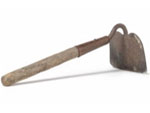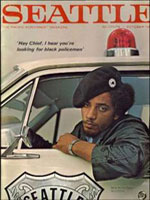The Short-Handled Hoe

Students view a variety of documents and artifacts related to the short-handled hoe, migrant labor, and the United Farm Workers. They then draw on these sources to develop an online museum exhibit for the hoe.
This lesson uses a simple farming tool, the short-handled hoe, to introduce students to migrant labor in California and the farm worker labor movement.
After a brief introduction to the hoe and the bracero program that brought workers to California from Mexico, students explore a variety of artifacts to understand the context of the hoe’s use, as well as the United Farm Workers’ role in the 20th-century labor and civil rights movement. Students then draw from these varied sources to create an online museum exhibit centered on the hoe.
One of the great strengths of this lesson is that it starts with what seems a simple artifact, the short-handled hoe, but leads students towards more complex thinking, including grappling with the artifact’s larger symbolic and political meanings and its historical significance. The lesson also provides an excellent opportunity for teaching about historical context because placing the short-handled hoe in the context of the other artifacts and documents clarifies the meaning of this particular artifact (labeled a “barbaric instrument” by one doctor).
While the lesson provides only minimal structure, teachers will appreciate the wealth of companion resources, including historians’ commentary, images of other farming tools, and primary sources related to California farm labor, and the work of César Chavez and the United Farm Workers.

Yes
Yes
In addition to a brief introduction, teachers can find additional resources listed here.
Yes
While many of the primary sources are artifacts, others are written documents. In addition, in the final activity, students must give a written justification for items included in their exhibit.
Yes
Students create a thesis statement for their exhibit and have to explain why they chose each of the items in their exhibit. Ideally, this explanation should connect to the thesis.
Yes
Yes
No
Teachers may want to provide additional support for struggling readers and English Language Learners in understanding some of the historical documents.
No
While no specific assessment is provided, teachers may use the culminating activity as an assessment. Criteria for assessment would need to be established.
Yes
Yes
